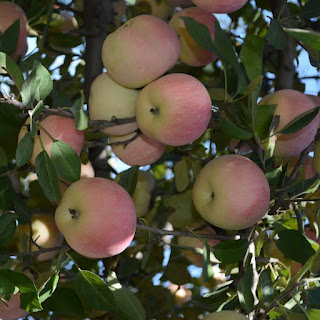Scotch broom
Scotch Broom a species of Brooms
Common Name
Broom
Common Broom
Spenesh Broom
Scots Broom
Yellow Broom
Botanical Name
Cytisus scoparius
Information
Scotch broom (Cytisus scoparius) is a perennial shrub that commonly grows in Europe. Scotch broom is also referred to as the "common broom." The plants grow in sunny areas in dry soil and can withstand acidic soil conditions. In Italian folklore, scotch broom was burned to stop witches. Scotch broom was a historical symbol of French king Charles VI.
Name Story
Scotch broom, English broom
Cytisus scoparius, is a perennial leguminous shrub that is native to western and central Europe. In Britain and Ireland, the standard name for the plant is broom, but this name is also used for other species of the Genisteae tribe. In other English-speaking countries, the most prevalent common name is Scotch broom or Scot's broom. Furthermore, it is known as an English broom in Australia. Moreover, it was brought to United States from the British Isles and central Europe to serve as an ornamental plant and erosion control.
Interesting Facts
Scotch broom has several folklore associations. For example, when scotch broom produced a lot of flowers, it was considered to be a sign of plenty. In Italy, scotch broom was burned to ward off witches. In other places, it was used in bouquets at weddings to replace rosemary.
Symbolism
Humility, Neatness
Characteristics
Plant Type
Shrub
Lifespan
Perennial
Bloom Time
Mid spring, Late spring, Early summer, Mid summer, Early winter.
Plant Height
3 to 10 feet
Spread
4 to 8 feet
Flower Size
0.6 to 0.8 inch
Habitat
Sandy pastures, heaths, near the coast
Flower Color
YellowRedOrangePink
Leaf Color
Green
Fruit Color
Black
Stem Color
Green
Conditions Requirement
Difficulty Rating
Scotch broom is super easy to take care of, with resistance to almost all pests and diseases. It is a perfect option for gardeners with brown thumbs.
Sunlight
Full sun, Partial sun
Hardiness
-10 ℉
Hardiness Zones
10 to 12
Soil
Sand, Loam, Clay, Chalky, Acidic, Neutral, Slightly alkaline.
Care Guide
Water
Scotch broom can be damaged if it grows in waterlogged soils so it should never be overwatered. When it is newly planted it should be watered often enough to ensure that soil is always moist. After this, the plant should be able to derive all of its water requirements from rainfall, except in times of drought. The soil should be allowed to dry out completely before any supplemental watering.
Fertilization
Fertilization once every 2-3 months during the growing season.
Pruning
Trim the diseased, withered leaves once a month.
Planting Time
Spring, Fall
Harvest Time
Spring, Summer
Propagation
Cutting, Sowing
Potting Suggestions
Needs excellent drainage in pots.
Pests and Diseases
Honey fungus, waterlogging; broom gall mites
Scientific classification
Genus
Cytisus - Brooms
Family
Fabaceae - Legume, Pea, Bean
Order
Fabales - Legumes, milkworts and allies, Peas, beans and relatives
Class
Magnoliopsida - Dicotyledons, Dicots, Eudicots
Phylum
Tracheophyta - Vascular plants, Seed plants, Ferns, Tracheophytes..
Plant Distribution
Native
Cultivated
Invasive
Potentially invasive
Exotic
No species reported
Aggressive, opportunistic, and prolific are all words commonly used to describe the scotch broom. Just one plant can produce more than 20,000 seeds. These seeds can lie in wait in the soil for as long as 80 years (though there is some disagreement on this point, and some researchers claim it lasts 30 years). This prolific reproduction allows it to quickly and easily take over natural areas, forests, dunes, and disturbed lands. Its growth will push out local species and smother the seedlings of trees. Further, this is a plant that is highly flammable, making it more dangerous in areas with wildfires, and is toxic to most animals and to humans. It is native to Europe and North Africa and is classified as invasive in the United States..
Uses
Garden Use
Although in many areas it is considered invasive, scotch broom has some valuable uses in the garden. Where hardy, it can provide some winter foliage and color. Additionally, it is known for being useful on slopes or in poor, loose soil for erosion control. With similar uses, Heather, Shrub rose, and Ceanothus make good companion plants.




Comments
Post a Comment